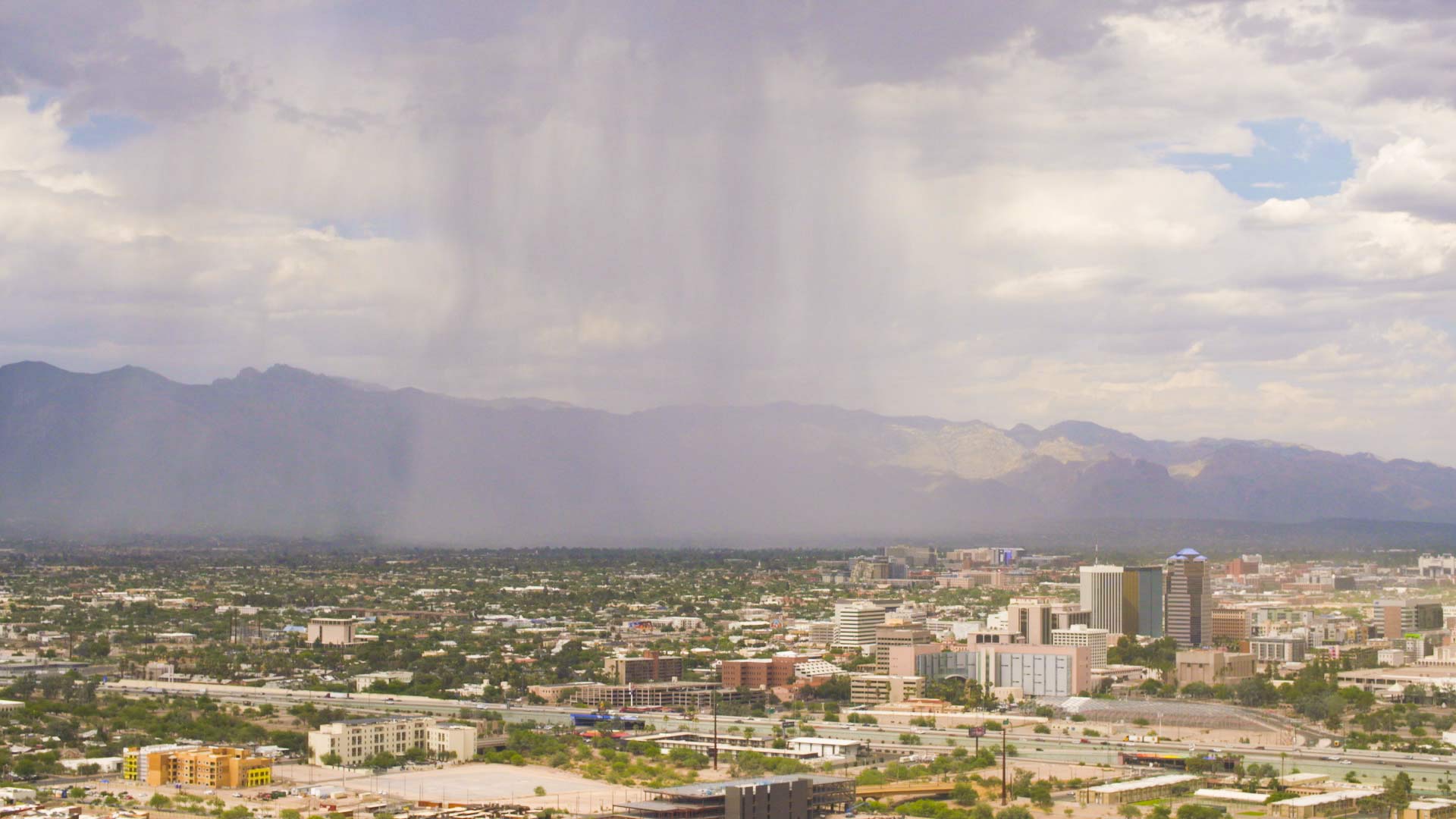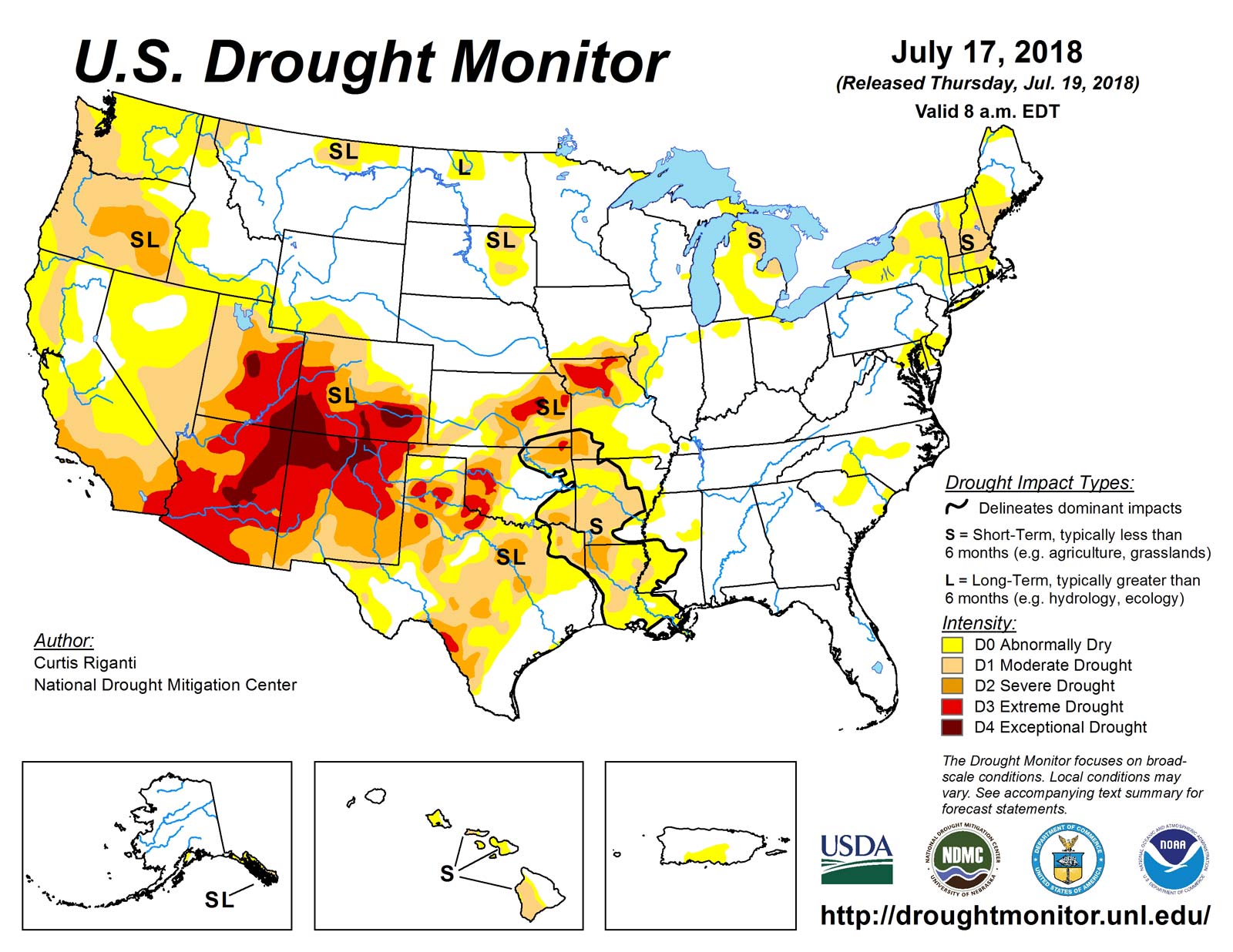 Rain and sunlight interact over Tucson, July 5, 2018.
Rain and sunlight interact over Tucson, July 5, 2018.
ALBUQUERQUE, N.M.— The threat of wildfire in the American Southwest has been significantly dampened by monsoon moisture, but national fire and climatology experts said Wednesday the region is still grappling with the long-term effects of drought.
The experts focused on the situation across Arizona, Colorado, New Mexico and Utah, which is currently home to the largest swath of severe and extreme drought in the U.S.
"Most of the West is dry," said Nancy Selover, Arizona's state climatologist. "You've got dust storms across Interstate 10 in southern New Mexico, and we've got really dry range conditions. We've got lakes that are drying up. It's pretty ugly."
The region didn't see much winter snow or spring rains, and the summer rains that have developed so far haven't benefited everyone, Selover said. Monitors that track daily stream flows show parts of New Mexico and Colorado are still low, and several major reservoirs around the region are well below capacity, she said.
 VIEW LARGER Current drought conditions across the U.S. as of July 17, 2018.
VIEW LARGER Current drought conditions across the U.S. as of July 17, 2018. New Mexico's governor issued a drought declaration this month, groundwater levels are dropping across much of Arizona as crops are being irrigated, and the price of hay has doubled in southwest Colorado as fires persist in other parts of that state. In Utah, several counties have drought declarations in place after having the warmest and least snowy winter since the 1800s.
Ranchers across the states also have been forced to cull their herds.
On the fire front, the rains that have developed in recent weeks are helping to increase vegetation moisture levels. That means fires that do start are less likely to spread quickly, said Ed Delgado with the National Interagency Fire Center in Idaho.
The monsoon is what he describes as the shut-off valve for fire season in the Southwest. "When the monsoon kicked in in early July, we started to see a huge decline in fire severity, fire size and the number of fires," he said.
There are still dry areas in northern Utah and northwestern Colorado that fire managers are monitoring.
Overall, the fire center reported Wednesday that activity has picked up in other areas of the West as 14 new large fires were sparked. Most are burning in Oregon and Idaho, but crews also are working to get a handle on a lightning-sparked fire in northern New Mexico.
More than 17,000 firefighters and support personnel are working across the West, according to the center.

By submitting your comments, you hereby give AZPM the right to post your comments and potentially use them in any other form of media operated by this institution.